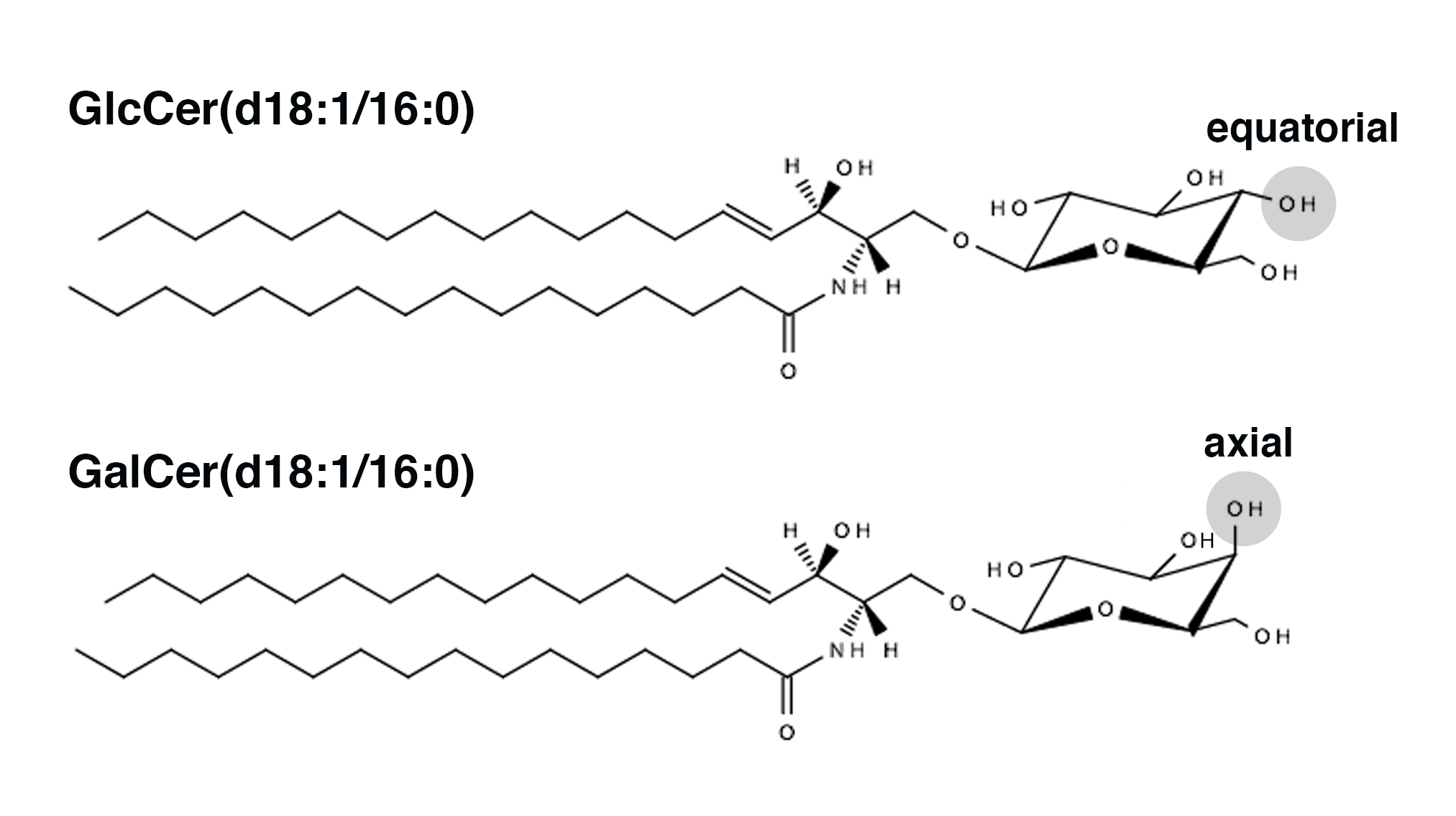DMS as an orthogonal separation to LC-ESI-MS/MS for quantifying isomeric cerebrosides in plasma and cerebrospinal fluid
April 15th, 2019, by Hongbin Xu


Figure 1. Chemical structures of isomeric GlcCer and GalCer. Shown are structures of GlcCer(d18:1/16:0) and GalCer(d18:1/16:0). Both have the same Cer(d18:1/16:0) core structure to which a sugar molecule, glucose or galactose, is attached via β-glycosidic linkage. The only structural difference between them is the 4’-hydroxyl group of the sugar moiety (shaded) being either in the equatorial position (GlcCer) or axial position (GalCer).
Glucosylceramides (GlcCers) and galactosylceramides (GalCers) are structurally related lipids that are important for mammalian cells. However, their presence in the body is tissue-specific, and problems with the body’s ability to maintain the right balance of theses lipids can lead to devastating but drastically different diseases. For example, mutations in GBA gene with deficient glucosylcerebrosidase lead to build up of GlcCer in cells and the production of toxic glucosylsphingosine. Individuals with mutations of GBA gene also present higher risk of developing Parkinson’s disease. On the other hand, people with mutations in the GALC gene develop Krabbe disease due to cell’s inability to clear GalCer and the production of toxic galactosylsphingosine. Thus, specific profiling and quantification of GlcCer and GalCer are essential for biomarker discovery and drug screening. The specific quantification of GlcCer and GalCer is, however, particularly challenging due to their virtually identical structures (Figure 1). To address this challenge, we developed a new liquid chromatography mass spectrometry (LC/MS)-based method using differential ion mobility spectrometry (DMS) to allow rapid and reproducible separation and quantification of structurally very similar GlcCer and GalCer in a single run (Figure 2). We have shown that our method is capable of quantifying specific GlcCer and GalCer in human plasma and cerebrospinal fluid (CSF). As human CSF is a scarce and precious resource, particularly from disease-specific biobanks, this method facilitates measurement in the applied neurological research setting.
.png)
Figure 2. Profiling and quantification of GlcCer and GalCer in human plasma (Left panel) and CSF (Right panel) using our method.